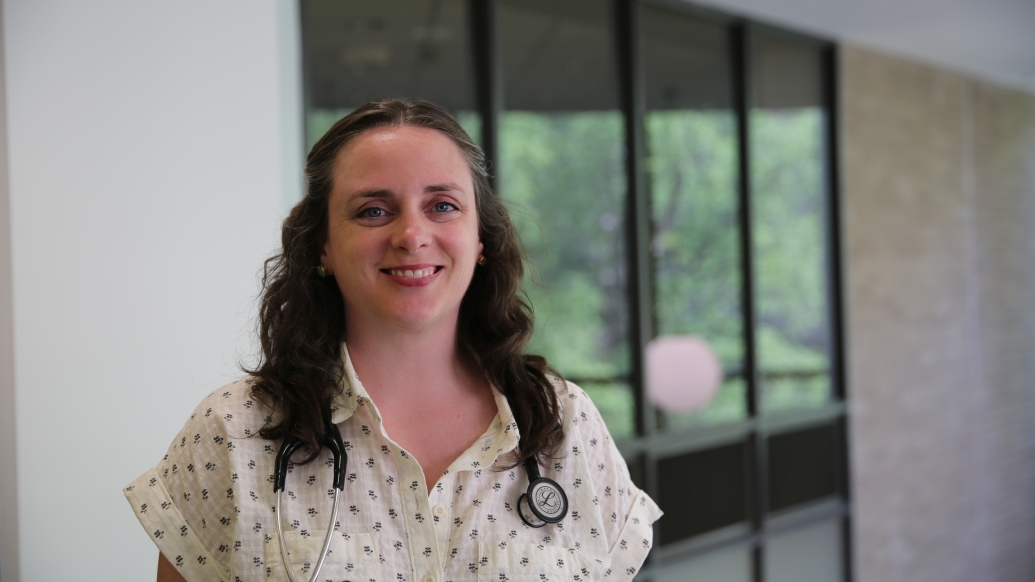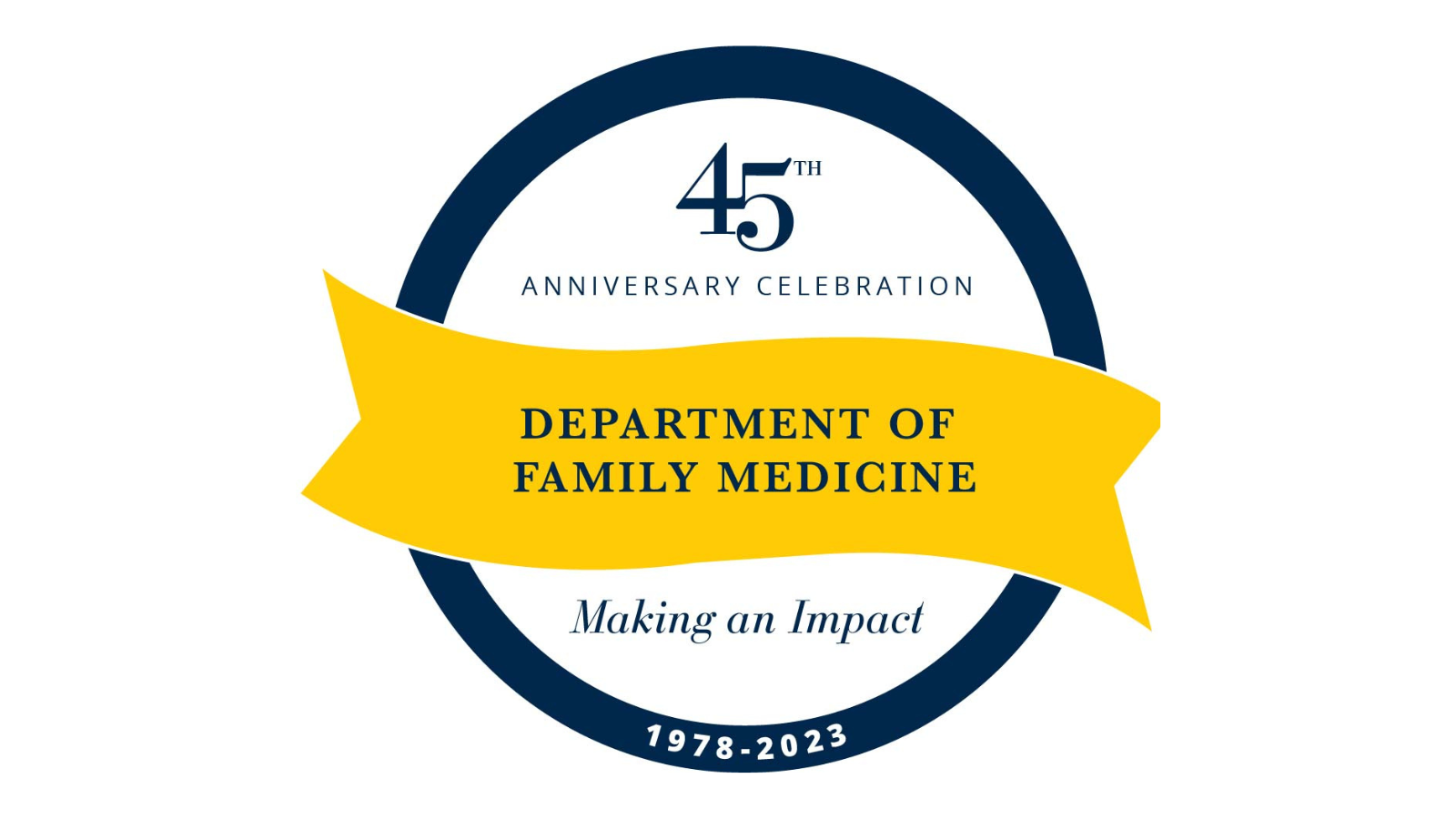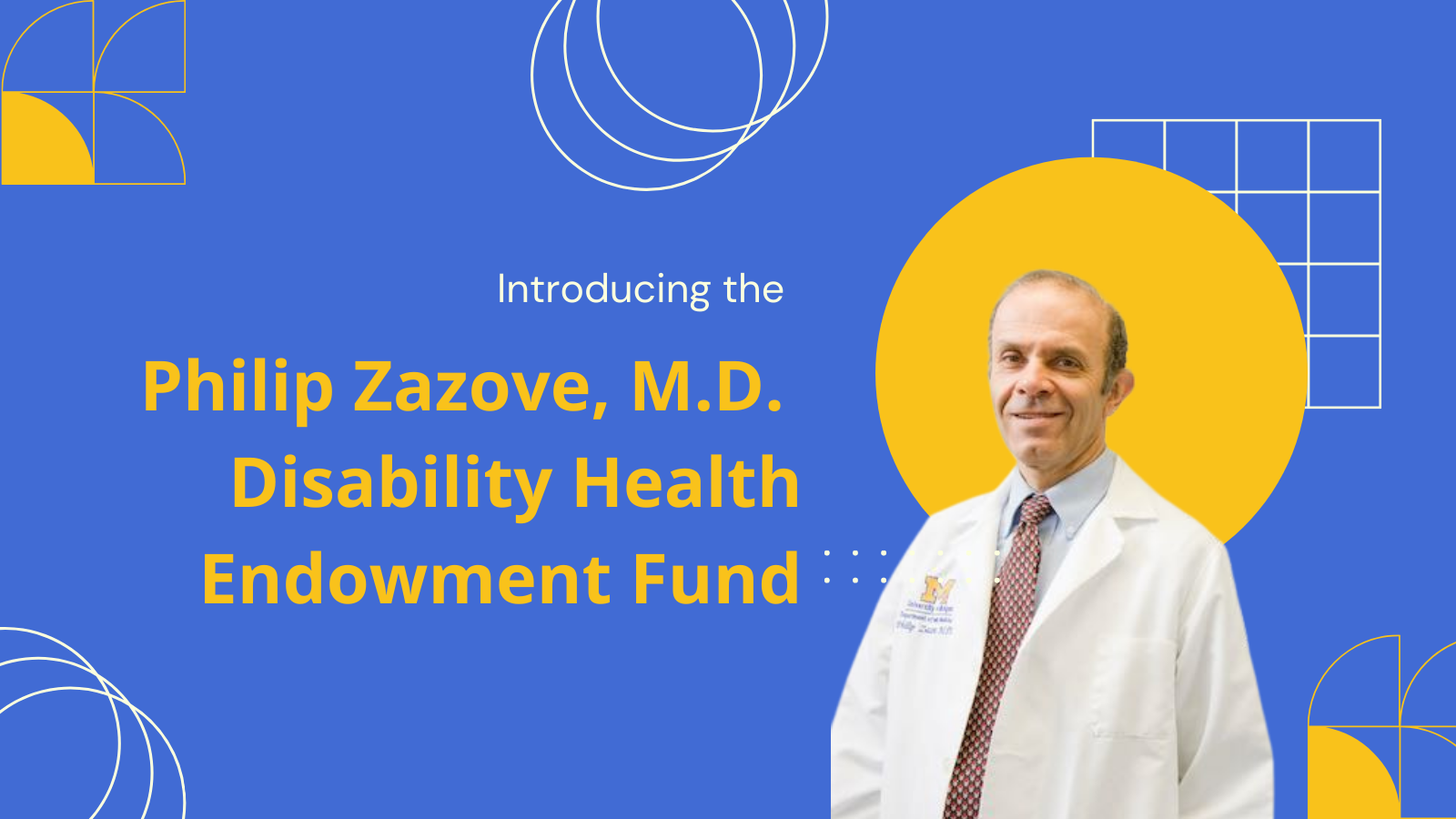
Many Spanish-speaking patients tell Katherine Hughey, M.D., that being able to talk to a doctor in their native language creates a special level of trust. Hughey says patients will often come to clinic visits with communications related to their health that are written in English, but which they wish to discuss with her in Spanish.
Hughey understands the importance of having a healthcare professional who can speak your language. Before entering medical school, she volunteered at an HIV clinic in the Dominican Republic. She had some basic Spanish knowledge, but she says it was a real immersion experience.
“There weren’t really any other English speakers around,” Hughey says. “So when you have to speak Spanish to eat and get around, and get what you need, you just have to do it.”
By the time she left the Dominican Republic, Hughey was fluent in Spanish, but she says the experience of not being able to effectively communicate when she first arrived ultimately directed the course of her career.
“I was lucky I didn’t get seriously sick or injured, or anything like that,” she says. “But the difficulty in just figuring out on your own how to care for yourself really gave me an insight that I think is hard to find when you’re part of the majority in the United States. I also think I was so cared for, and that just really has made me want to share that and pay that forward.”
This background has made it possible to pay it forward in her predominantly Spanish-language clinical practice at the U-M Ypsilanti Health Center. Hughey says patients often learn about the clinic through word of mouth. Some parents have heard about it from their children who attendScarlett Middle School and Ypsilanti Community High School, where she also sees patients as part of U-M’s Regional Alliance for Healthy Schools.
Hughey has worked at the Ypsilanti clinic for 10 years and says there are a lot of language-related barriers facing patients before they even get in to see her.
“When I’m talking to somebody in a visit, I can only do so much in Spanish. I can write their instructions in Spanish, but then they go to the pharmacy, and the medication label is in English, or they need to go and get an ultrasound, and all the parking signs are in English.”
This is why Hughey is so passionate about the medical Spanish elective course at the Medical School. As an assistant professor of family medicine at U-M, Hughey also serves as the faculty adviser for the Medicine in Spanish program. The goal of the class is for students to gain confidence in common patient interactions such as taking patient histories and conducting physical exams in Spanish. Some of the students work with Hughey at the Ypsilanti clinic.
The elective is a popular option among students, with about 25 learners enrolling each year. As the program grows, Hughey says it’s in need of more funding to support costs such as salary for an instructor.
“There’s strong evidence on the importance of language and culturally sensitive care in improving health outcomes for patients, and I think students see all of that. So they want to be equipped to talk to their patients and to effectively partner with communities and to not leave anybody out.”
Una doctora de la Universidad de Michigan aprendió español para poder comunicarse con sus pacientes
Muchos pacientes de habla hispana le dicen a Katherine Hughey, M.D., que el poder hablar con un médico en su idioma nativo crea un nivel especial de confianza. Hughey dice que los pacientes a menudo acuden a las consultas en la clínica con comunicaciones relacionadas con su salud que están escritas en inglés, pero que desean discutir con ella en español.
Hughey comprende la importancia de contar con un profesional de la salud que pueda hablar tu idioma. Antes de ingresar a la escuela de medicina, trabajó como voluntaria en una clínica de VIH en la República Dominicana. Tenía algunos conocimientos básicos de español, pero dice que fue una verdadera experiencia de inmersión.
“No había realmente otros hablantes de inglés alrededor”, dice Hughey. “Así que cuando tienes que hablar español para comer, moverte y conseguir lo que necesitas, simplemente tienes que hacerlo”.
Cuando dejó la República Dominicana, Hughey hablaba español con fluidez, pero dice que la experiencia de no poder comunicarse eficazmente cuando llegó allí en un principio dirigió finalmente el rumbo de su carrera.
“Tuve la suerte de no enfermarme ni sufrir ninguna lesión grave ni nada por el estilo”, dice. “Pero la dificultad de tener que descubrir por mí misma cómo cuidarme realmente me dio una visión que creo que es difícil de encontrar cuando eres parte dela mayoría en los Estados Unidos. También creo que fui muy bien atendida y eso realmente me ha hecho querer compartir eso y reciprocar esa atención”.
Este trasfondo le ha permitido ofrecer esa atención en su práctica clínica, predominantemente en español, en el Centro de Salud en Ypsilanti de la Universidad de Michigan. Hughey dice que los pacientes a menudo se enteran de la clínica de boca a boca. Algunos padres han sabido de ella a través de sus hijos que asisten a la Escuela Intermedia Scarlett y a la Escuela Preparatoria Comunitaria de Ypsilanti, donde ella también atiende a pacientes como parte de la Alianza Regional para Escuelas Saludables de la Universidad de Michigan.
Hughey ha trabajado en la clínica de Ypsilanti durante 10 años y dice que los pacientes enfrentan muchas barreras relacionadas con el idioma incluso antes de poder tener un turno con ella.
“Cuando hablo con alguien en una consulta, solo puedo hacerlo parcialmente en español. Puedo escribir sus instrucciones en español, pero luego van a la farmacia y la etiqueta del medicamento está en inglés, o necesitan hacerse una ecografía y todos los letreros de estacionamiento están en inglés”.
Por eso Hughey está tan apasionada por la asignatura optativa de español médico en la Facultad de Medicina. Como profesora asistente de medicina familiar en la Universidad deMichigan, Hughey también se desempeña como asesora docente del programa Medicina en Español. El objetivo de la clase es que los estudiantes adquieran confianza en interacciones comunes con los pacientes tales como tomar historias clínicas y realizar exámenes físicos en español.
El curso electivo es una opción popular entre los estudiantes, con unos 25 alumnos inscritos cada año. A medida que el programa crece, Hughey dice que necesita más financiamiento para cubrir costos, como, por ejemplo, el salario de un instructor.
“Hay evidencia sólida sobre la importancia del idioma y la atención culturalmente sensible para mejorar los resultados de salud para los pacientes, y creo que los estudiantes ven todo eso. Por eso quieren estar preparados para hablar con sus pacientes y colaborar de manera efectiva con las comunidades, sin excluir a nadie”



